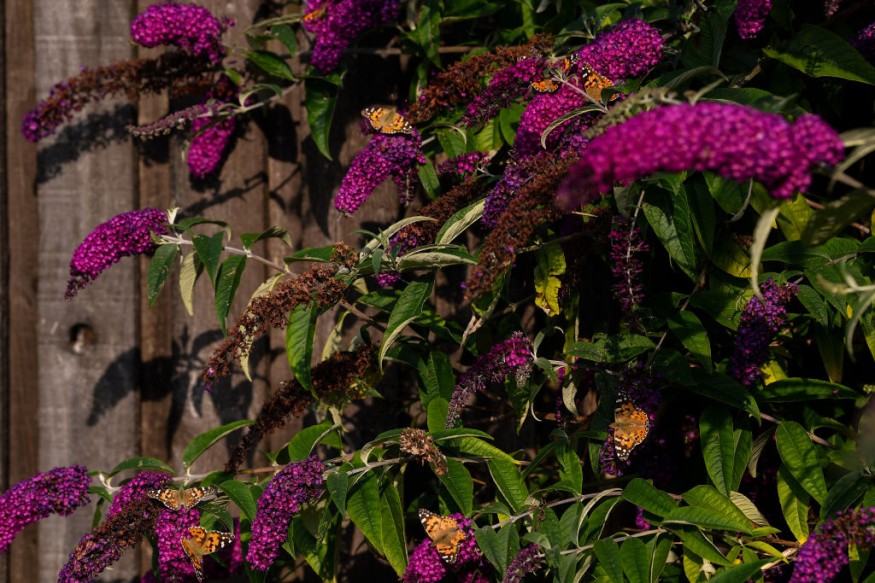
Buddleia is an invasive plant that some gardeners in the UK are cultivating because of its lovely blossoms.
Troublesome Invasive Buddleia
Japanese knotweed, poisonous caterpillars, and a restriction on slug pellets all seem to be harming UK gardens this season.
Jonathan Barton, the PBA Solutions director, has referred to buddleia, a non-native species, as being more problematic than Japanese knotweed.
This is because it may disperse by seed, and those seeds can grow in challenging locations under rather unfriendly conditions, even on rooftops where the infamous Japanese knotweed cannot reach.
Contrary to the notorious Japanese knotweed, buddleia is frequently planted on purpose for both aesthetic reasons and because it attracts animals.
According to the Royal Society for the Protection of Birds, buddleia is excellent in luring a variety of insects to eat its nectar. This is why, since being brought from China, it has been commonly planted in gardens that are favorable to animals and other open places.
The Royal Horticultural Society provides online instructions on how to grow the very lovely shrub.
The Lure Pretty Flowers
Reading about the plant from The Wildlife Trusts, it becomes clear why it is so common in British gardens.
According to the Trust, buddleia bushes have huge, hanging spikes with closely packed, tiny, purple, or occasionally white flowers. It has long, thin leaves, and its fragrant blossoms smell like honey.
They continue by stating that the plant's well-known purple flowers blossom from June to October and draw a variety of butterflies and moths in search of nectar.
Still Invasive
In the same manner, as Japanese knotweed does, the buddleia grows roots in the weaker areas of a house's foundation, making it less secure.
It produces a large number of tiny, light seeds, which disperse very quickly, according to the RSPB. It may flourish in many locations, including crevices in structures that are several stories high.
According to Barton, once a plant has taken root in a building's wall or roof, it will send fibrous roots down and as it develops, it may seriously harm the structure of the building.
Furthermore, buddleia may thrive in the most challenging environments. The Wildlife Trusts has observed its flying seeds colonizing rough areas with ease.
Its flying seeds have been seen by The Wildlife Trusts to colonize rocky terrain with ease.
According to the RSPB, Buddleia davidii may draw a large number of butterflies, however, it is better to grow non-invasive flowering plants for the butterflies to nectar at if doing so means displacing rare invertebrates that would otherwise be dwelling there.
Switching to Non-Invasive
Fortunately, unlike Japanese knotweed, buddleia doesn't require full removal from the garden because the issue doesn't lie with the roots.
To prevent the invasive plant from spreading its seeds, the RSPB encourages gardeners to aggressively trim it as soon as the flowers have faded.
Experts advise properly disposing of the prunings once the flowers have been pruned, rather than throwing them over the yard fence. In addition, experts advise thinking about replacing the Buddleia davidii with non-invasive shrubs after it dies, Huffington Post reports.
Related Article : Invasive Plant Kudzu Vine Expected to Take Over Midwest US at Alarmingly Rapid Rate
© 2025 NatureWorldNews.com All rights reserved. Do not reproduce without permission.





